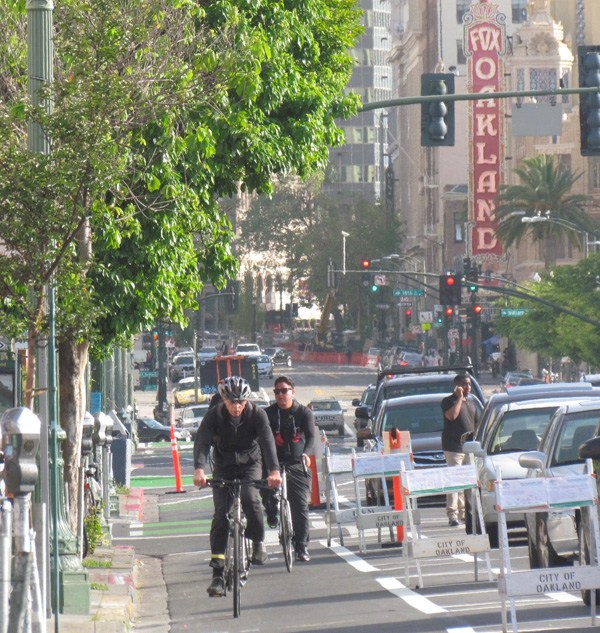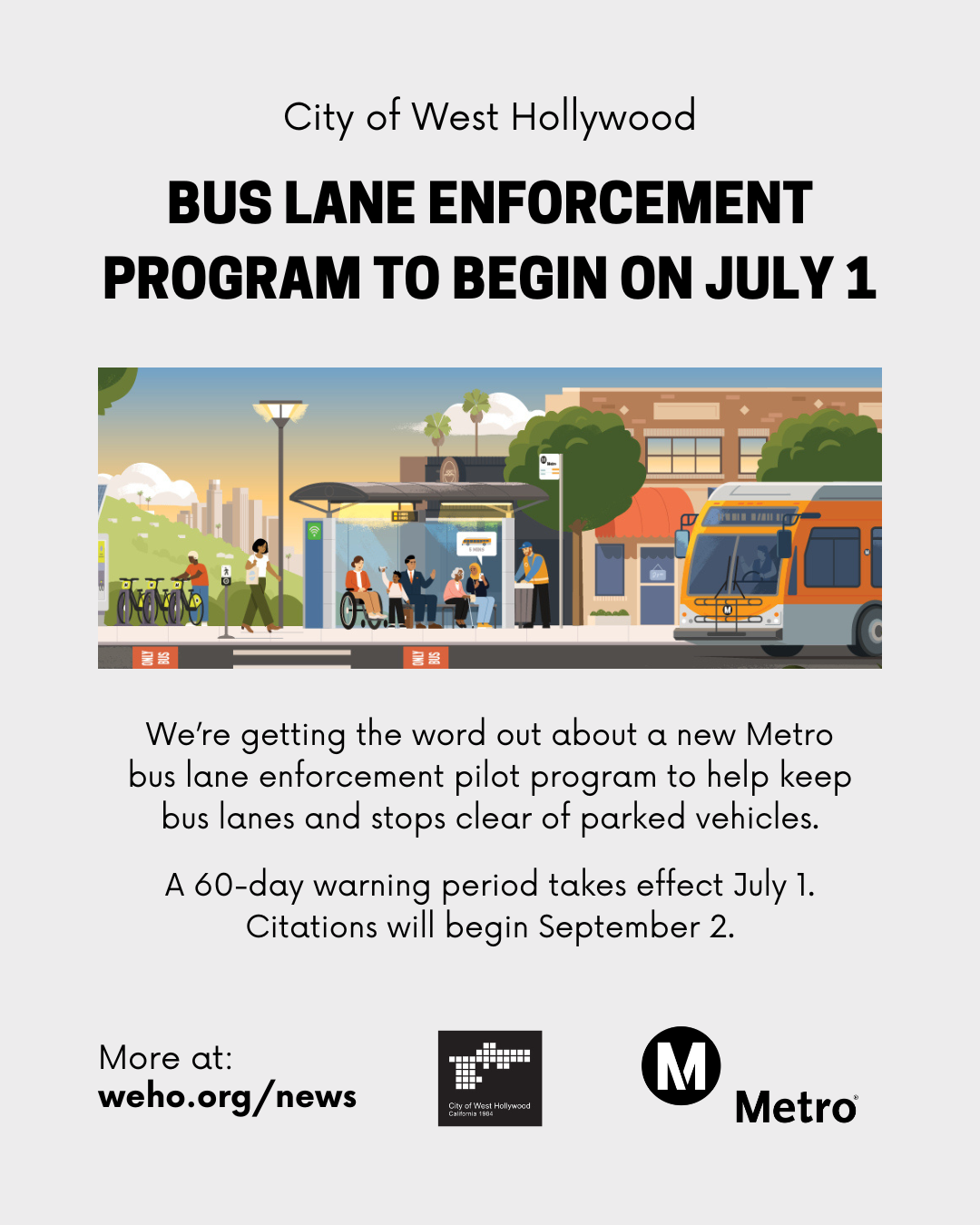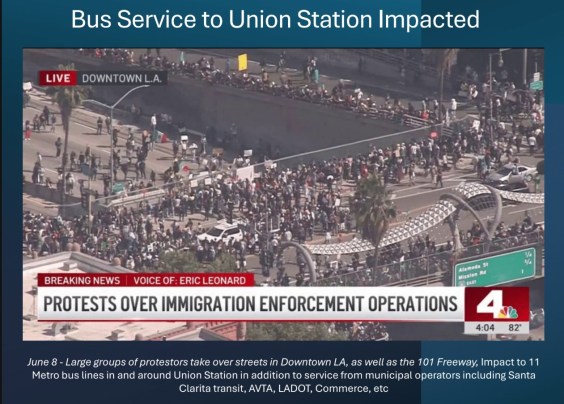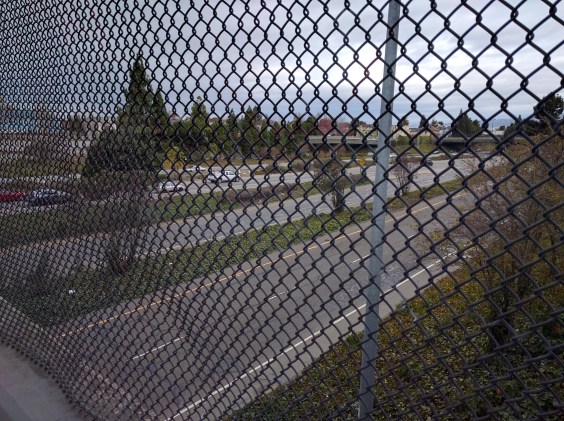At its meeting this week, the California Transportation Commission agreed to accelerate its allocations of funds for approved Active Transportation Program (ATP) projects. This is possible because S.B. 1, the transportation funding bill recently passed by the state legislature, included an annual increase of $100 million for the ATP, a more than 80 percent increase over current funding levels. Most ATP projects that had been awarded in recent rounds were not anticipated to receive their funding until 2020 at the earliest; this new funding will mean these projects can be on the ground sooner.
It will also means that some of the many projects that applied for, but were not awarded, the ATP grants can be reconsidered for funding.
As we have said many times at Streetsblog, the ATP has been way oversubscribed and underfunded, with only about a third of the projects that apply in each round being approved for funding.
The increase in ATP funding will not only allow funds to be released sooner, and allow more applicants to receive funds, it could also encourage more applications in future rounds of the program. In some cities, planners have limited their project applications because it takes a lot of staff time and resources to apply, and their potential for success has been low. More money means it is more likely that their projects will be funded.
Also during its unusually short monthly meeting this week, the commission approved the San Joaquin Council of Governments' priority ATP project list of six projects. The CTC had adopted the Active Transportation Programs of the other MPOs in March, and this finishes the current round of funding approvals. The list of projects is at the end of this post.
The commission also approved allocations of almost $35 million for 38 ATP projects that have been approved and are ready to move forward—those projects are also listed below.
Other business at the meeting included the commission's first discussions about programs that will be receiving funding from S.B. 1, including several that are new and several that bring new responsibilities to the CTC. One if its first tasks is to create guidelines for prioritizing projects.
That means that CTC staff will be very busy in the coming months, as they will need to gather public input in the guidelines for the various programs. It's not yet clear what that call for input will look like, although there will be workshops in the coming months. Public commenters at the meeting urged commission staff to make sure the public input process is robust, and includes people who have expertise in equity issues and the problems caused by our car-focused planning process, not just drivers and commercial interests.
The schedule for the guidelines, as presented at the meeting, will be as follows:
- For the Active Transportation Program, workshops will be held in June 2017, with a plan to adopt updates to existing guidelines at the end of June.
- For the Local Partnership Program, which will make $200 million per year available for transportation projects in counties that have agreed to tax themselves, guidelines must be adopted before January 1, 2018, according to S.B. 1. CTC staff plan to hold workshops this summer, and anticipate bringing a draft set of guidelines to the commission in August of this year.
Staff had recommended that the Local Partnership Program funds be grouped into two categories, with 75 percent allocated for a competitive program and 25 percent by formula, meaning that each agency would get a share based on ridership and fare revenue. At the meeting, representatives for several MPOs pushed back, saying that competitive programs take a lot of staff and volunteer time to administer and they could produce more results faster if a higher percentage of the funds were distributed by formula. No decision was made about whether to change that distribution at the meeting.
- S.B. 1 gives the CTC new responsibilities for the Local Streets and Roads program, including development of guidelines and review of project lists. Staff plan to hold workshops on the guidelines in June and July, and to present draft guidelines to the commission in August.
- The Solutions for Congested Corridors program is new, funded with $250 million annually from S.B. 1. CTC staff plan to hold workshops this summer and fall, and to present draft guidelines to the commission in October.
- The State Highway Operation and Protection Program (SHOPP) will get a $1.9 billion annual bump in funding, and the CTC has expanded oversight for this program, which is the major funding source for repairing and maintaining roads in California. The staff included draft interim guidelines in the agenda for this CTC meeting, but they were not discussed in any detail.
- The Trade Corridor Enhancement Account is a new $300-million-per-year account to fund freight projects. The legislature is currently working on specific guidance for the program, which may include putting the first year's funding into the existing California Freight Investment Program. Staff anticipate creating guidelines by the end of 2017.
SAN JOAQUIN COG ATP LIST
The commission approved SJCOG's six projects for $2 million in ATP funding. They include:
- A Safe Routes to Schools project in Stockton that will build sidewalks, curbs, and gutters, near six schools, including installing and upgrading curb ramps and improving crosswalks
- Adding video detection of bicyclists and green bike lanes at thirteen signalized intersections in the city of Lodi
- Increasing bike carrying capacity on San Joaquin Regional Transit District buses with racks that carry three bikes, racks in luggage bays, and bike racks at the Stockton Downtown Transit Center.
The other projects are a Complete Streets project along Miner Avenue, improvements to the March Lane bike and pedestrian path in Stockton, and a project to construct sidewalks along Lowell Avenue in Tracy.
ALLOCATIONS FOR ATP PROJECTS
The commission allocated $35 million for 38 ATP projects that ready to proceed, including:
- Connections from the Truckee River Legacy trail to a nearby subdivision in Truckee
- Pedestrian lighting and sidewalk repair along International Blvd in Oakland
- Connecting a shared-use path to a bike boulevard along 9th Street in Berkeley
- Bike lanes along North Fremont Street in Monterey
- A dedicated path for bicycles and walkers through Santa Barbara, connecting schools, parks, and beaches
- Sidewalks and pedestrian improvements in Fresno
- A new multi-use trail in Clovis
- A sidewalk and bike lane in Parlier
- Sidewalks in Bakersfield and Tulare
- Bike lanes in Covina
- Closing gaps in the bike network in La Verne
- A bike/ped bridge over the Sierra Highway in Santa Clarita
- Fixing sidewalks and widening a bridge in Riverside County
- Better bike and pedestrian access at Metrolink stations in San Bernardino
- Bike lanes and sidewalks in Big Bear
- Extension of bike and pedestrian trail in Garden Grove
- Bicycle trail and sidewalks in Anaheim
- Safe Routes to Schools projects, including improvements such as sidewalks, bike lanes, curb bump-outs, and crosswalks, in Fortuna, Galt, Salinas, Glendale, Indio, Patterson, National City, Santa Ana
- A Safe Routes to Schools program that includes curriculum and training on safe active transportation in San Mateo County
- Creating an Active Transportation Plan in Irwindale, Stockton
The commission also allocated $832,000 for three ATP projects that were just adopted and are ready to proceed. Those projects are:
- Alameda County's Creekside Middle School Safe Routes to School project, with sidewalks, curbs, crosswalks, and bike routes
- Oakland's Telegraph Avenue Complete Street Improvements which will complete the protected bike lanes there and add transit boarding islands
- Salinas' Bardin Road Safe Routes to School Improvements, which includes buffered bike lanes, roundabouts, sidewalks, and crosswalk enhancements






